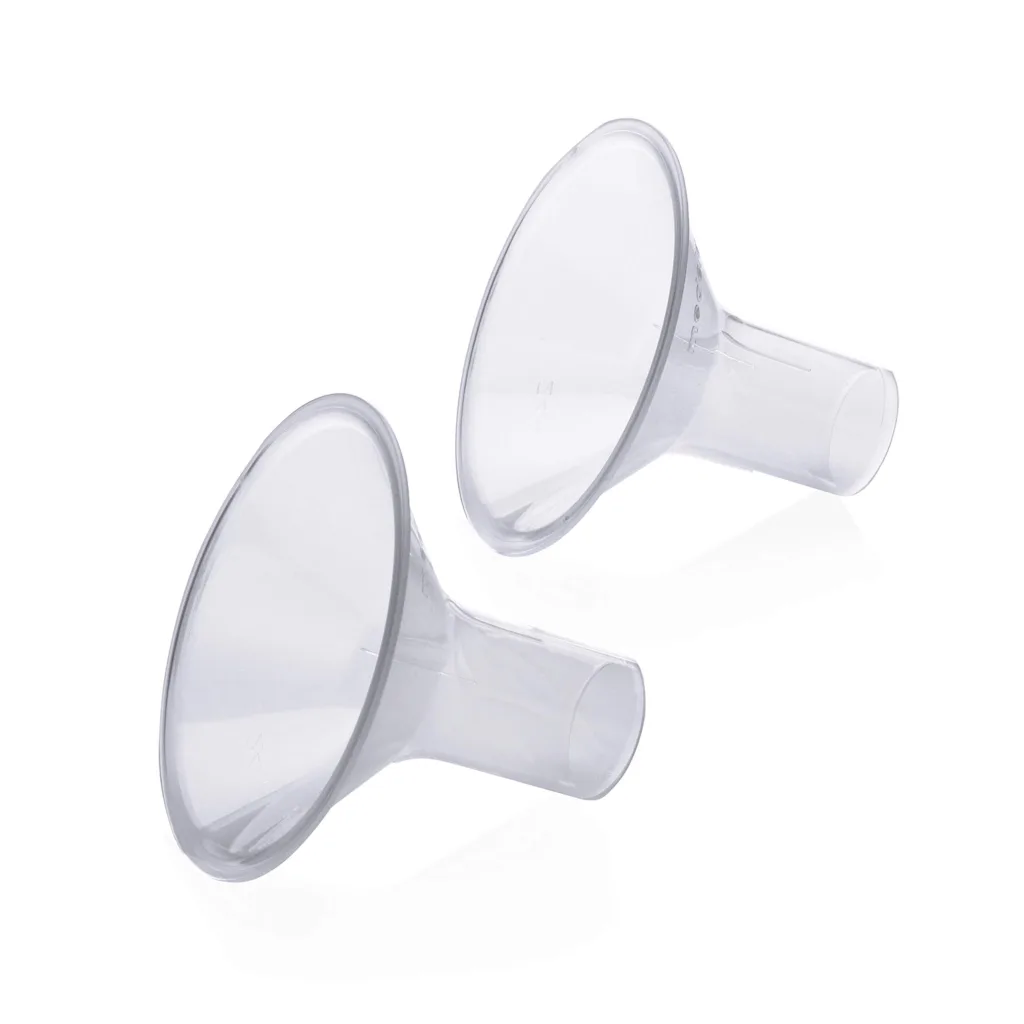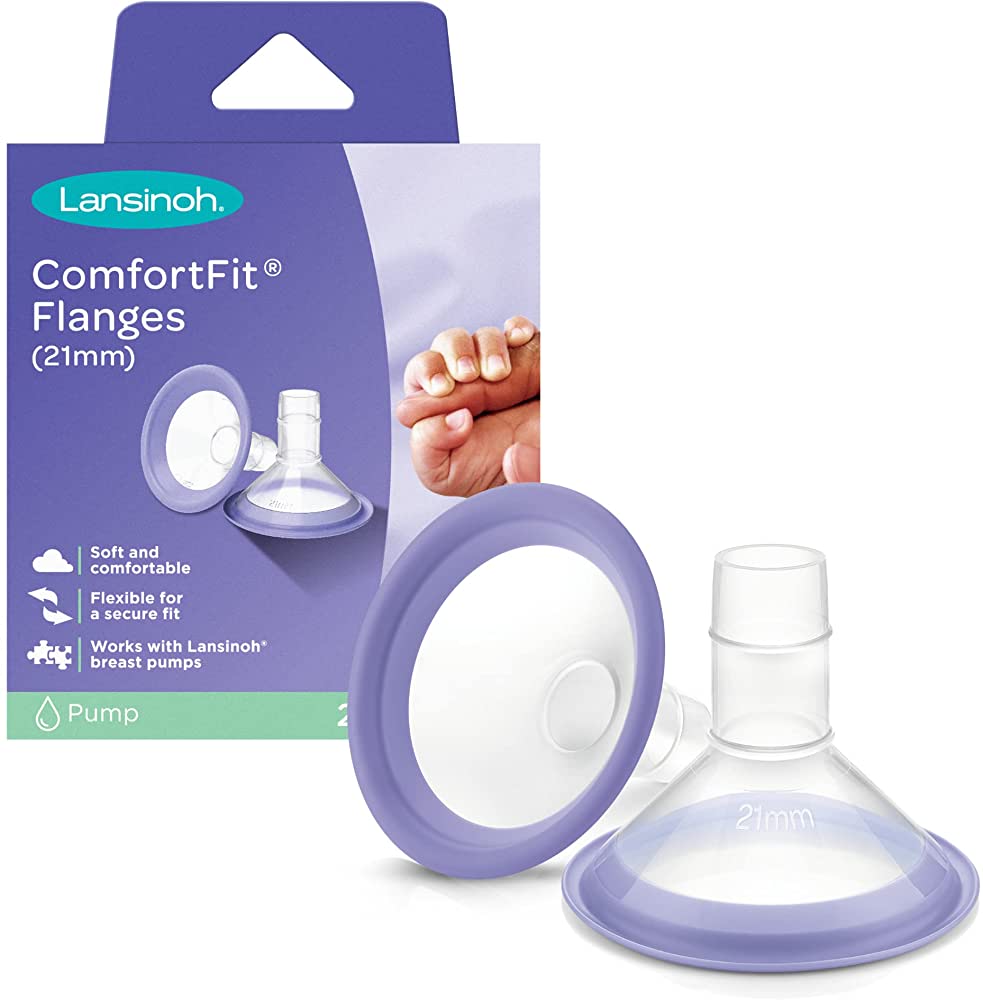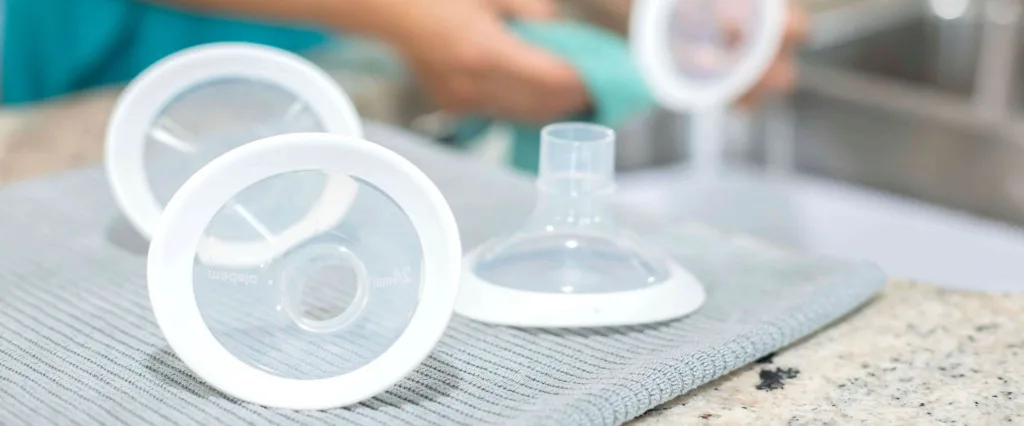When it comes to using a breast pump, proper flange size is crucial for both comfort and milk production. If your flanges are too large, you may experience discomfort or even low milk supply. Let’s take a closer look at what happens when your flange size is too big.
Firstly, if your flange is too large, your areola may be pulled into the pump’s breast flange tunnel. This can cause discomfort and even pain, as the skin and tissue around your areola are delicate and sensitive. The pulling sensation can also be distracting and make it difficult to relax and let down your milk.
Additionally, if your flange is too big, your areola may not receive enough stimulation. Stimulation is necessay to trigger the let-down reflex, which signals your body to release milk. Without proper stimulation, your milk may not flow as easily, leading to delayed onset low milk supply.
Another potential issue with a flange that is too big is that it can be difficult to achieve a good seal. A good seal is necessary to create the suction needed to effectively remove milk from your breasts. If the flange is too big, it may not fit snugly around your breast, which can lead to air leaks and reduced suction.
Lastly, using a flange that is too big can lead to decreased milk production over time. When your breast is not being properly stimulated, your body may begin to produce less milk in response. This can create a vicious cycle, where low milk production leads to less stimulation, which leads to even lower milk production.
If you suspect that your flange size is too big, it’s important to measure yourself and find the correct size. A properly fitted flange should allow your nipple to move freely in the tunnel, with a small amount of areola being pulled in with each cycle. If there is no areola movement, your flange might be too small. If there is too much movement, it might be too big.
Using a breast pump with a flange that is too big can cause discomfort, reduced milk production, and difficulty achieving a good seal. It’s important to find the right size for your body to ensure a comfortable and effective pumping experience.
Consequences of Having a Flange That Is Too Big
When your flange is too big, it can cause a few different issues. Firstly, your areola may be pulled into the breast flange tunnel of your pump, which can be uncomfortable and even painful. Additionally, if your areola is being pulled too far into the flange, it may not receive enough stimulation to properly trigger letdown and milk production. This can lead to delayed onset of low milk supply, which can be frustrating and stressful for breastfeeding mothers. It’s important to ensure that you are using the correct flange size for your breast to prevent tese issues and to ensure optimal milk production.

The Impact of Using a Flange That Is Too Big or Too Small
It is important to use a flange that fits correctly to ensure optimal milk output and prevent discomfort or injury. If the flange is too small, it can cause nipple pain and damage, as well as reduce milk flow and ultimately lower milk production. On the other hand, if the flange is too big, it can cause the breast tissue to be compressed, leading to clogged milk ducts and decreased milk flow. Therefore, it is recommended to use a flange that fits properly and comfortably to avoid any negative effects on milk production and breast health.
Is My Breast Pump Flange the Right Size?
If you are using a breast pump and notice that your nipple is sliding around inside the tunnel of the flange, it is possible that the flange is too big. A poorly fitting flange can result in reduced milk flow, discomfort, and even damage to your breast tissue.
To determine if your flange is too big, observe how much of your areola is bing pulled into the tunnel during pumping. If only a small amount of areola is being pulled in, or none at all, this may indicate that the flange is too large.
Additionally, if you experience discomfort or pain during pumping, this may also be a sign that your flange is too big. A flange that is too large can cause your nipple to rub against the sides of the tunnel, resulting in soreness and irritation.
To ensure that you are using the correct flange size, consult with a lactation consultant or healthcare provider. They can help you determine the best flange size for your body and provide guidance on how to properly use your breast pump to maximize milk flow and minimize discomfort.
Verifying the Correct Flange Size
When it comes to using a breast pump, finding the correct flange size is crucial for comfort and effective milk expression. There are a few things to look out for that will indicate whether you have the correct size flange. Firstly, the flange should fit comfortably around your breast without causing any discomfort or pain. If the flange is too tight or too loose, you may experience discomfort or decreased milk expression.
Secondly, when using the pump, only your nipple and a small part or none of your areola should enter the tunnel. If too much of your breast tissue enters the tunnel, it can cause discomfort and may not effectively stimulate milk flow. Conversely, if your nipple is rubbing against the sides of the tunnel, the flange may be too small.
Lastly, when pumping, your nipple should move freely without rubbing against the sides of the tunnel. If you feel any friction, it may be an indication that the flange is too small or not the correct shape for your nipple.
The correct flange size should fit comfortably around your breast, allow only your nipple and a small part or none of your areola to enter the tunnel, and allow your nipple to move freely without rubbing against the sides of the tunnel. If you experience discomfort, decreased milk expression, or nipple friction, it may be worth trying a different flange size or shape.
Should Nipples Touch the Side of a Breast Pump Flange?
Your nipples should not touch the side of the flange when using a breast pump. In fact, it’s important to ensure that the flange size is correct to avoid any discomfort or damage to the nipple. When the flange is too small, the nipple may rub against the sides of the tunnel and cause irritation or soreness. On the other hand, if the flange is too large, it may not create a proper seal around the nipple, which can reduce milk output and cause pain. To determine the correct flange size, you should measure your nipple diameter and choose a flange size that allows your nipple to move freely in and out of the tunnel with lttle to no areola pulled in. Proper flange fit is crucial for effective and comfortable pumping, so it’s important to take the time to find the right size for you.

Adjusting to a New Flange Size: How Long Does It Take?
Adjusting to a new flange size can take anywhere from 2-14 days, depending on the individual. It is important to gradually increase the time you use the new flanges while decreasing the time you use the old flanges. This allows your body to slowly adjust to the new size and prevents discomfort or pain. Some individuals may adjust quicker in just 2-3 days, while others may take up to 10-14 days to fully adjust. It is important to be patient and listen to your body during this process to avoid any discomfort or damage to your breasts.
Common Flange Sizes
Most breast pumps come with a standard breast pump flange that is between 24 and 27 millimeters (mm) in size. This size corresponds to the size of the nipple, which is why it is considered the average size. However, it is important to note that not everyone who breastfeeds will fit this size. It is recommended to measure your nipple size to ensure that you are usng the correct size flange for optimal comfort and milk expression. Using an ill-fitting flange can cause discomfort, decrease milk output, and even lead to nipple damage. Therefore, it is essential to choose the correct size flange to ensure a successful and comfortable breastfeeding experience.
The Causes of Swollen Nipples During Breast Pumping
Nipple swelling during pumping is a common occurrence and can happen for various reasons. Firstly, the suction created by the breast pump can cause the nipple to become engorged with blood, leading to temporary swelling. Additionally, the constant compression and release of the nipple during pumping can also result in swelling.
Furthermore, breast milk that accumulates around the nipple during pumping can contribute to the swelling. It is essential to note that a lttle bit of swelling that subsides after a few minutes is normal and not a cause for concern. However, if the swelling persists for an extended period, it could be a sign of using the wrong flange size. Using the correct flange size will ensure proper suction and prevent nipple swelling.
It’s also worth noting that if you experience pain, discomfort, or notice any unusual changes in your breast or nipple, it’s best to consult a healthcare provider to rule out any underlying issues. nipple swelling during pumping is a normal occurrence, and by using the correct flange size, you can minimize discomfort and make the pumping experience more comfortable.
Consequences of Pumping with the Wrong Size Flange
If you use the wrong size pump flange, several negative effects can occur. Firstly, it can lead to breast and nipple pain due to the flange beig too small or too large. Secondly, it can negatively impact the amount of milk you are able to pump out of your breast. If the flange is too tight, it can cause the breast to be constricted, leading to clogged or blocked milk ducts. This can cause discomfort and even infection if left untreated. On the other hand, if the flange is too large, it may not create enough suction to effectively remove milk from your breast. This means you may not be able to express as much milk as you could with a correctly sized flange. It’s essential to use the right size flange to ensure comfortable and effective milk expression while avoiding any potential complications.

Determining the Appropriate Depth for Nipple Insertion into a Flange
When using a breast pump, it is important to ensure that your nipple is properly aligned inside the flange to avoid discomfort or pain wile pumping. Ideally, you want your nipple to be centered inside the flange tunnel, with only a few millimeters (approximately 3-5) of wiggle room around the nipple. This means that the entire nipple should fit comfortably inside the tunnel without any part of the areola entering it before pumping. If your nipple is not positioned properly inside the flange, it can lead to reduced milk output, discomfort, and even nipple damage. Therefore, it is important to take the time to accurately measure and adjust the flange size to ensure a proper fit and maximum pumping efficiency.
Identifying if a Medela Flange is Too Big
If you are using a Medela breast pump and notice discomfort or pain while pumping, it could be an indication that the flange size is too big. Signs that your flange size may be too big include your nipple rubbing against the sides of the breast shield tunnel or excessive areola being pulled into the tunnel during pumping. Additionally, if you notice that your milk output is low, it may be a result of using a flange size that is too big as it may not be effectively stimulating your milk ducts. It is important to pay attention to your body’s cues and consider trying a smaller flange size if you experience any of thse symptoms. Medela offers a variety of flange sizes to ensure a comfortable and efficient pumping experience.
Conclusion
To sum it up, using a breast pump with a flange that is too big can have negative consequences for breastfeeding mothers. It can cause discomfort, delayed onset of low milk supply, and even clogged milk ducts. Additionally, the areola may be pulled into the breast flange tunnel, which can be uncomfortable and lead to reduced milk production. Therefore, it is crucial for breastfeeding mothers to ensure that they are using the correct flange size to avoid any potential issues and promote successful breastfeeding.
